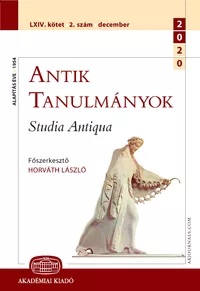Mixobarbaros – mixobarbaroi • A mixobarbaros melléknév jelentése Anna Komnéné Alexias című kortörténetében
Mixobarbaros - mixobarbaroi • The meaning of the adjective mixobarbaros in Anna Komnena's history of Alexias
Author(s): Zoltán FarkasSubject(s): Historical Linguistics
Published by: Akadémiai Kiadó
Keywords: Paristrion; Gyóni Mátyás; mixobarbaroi; μιξοβάρβαρος; Anna Comnena; Alexias
Summary/Abstract: The paper examines the sources quoted in Mátyás Gyóni’s study on the history of the Byzantine thema Paristrion in the 11th century and on the ethnonyms used in the Alexias, adopting a new approach. Tracing the history of the word μιξοβάρβαρος from the classical era on, it states that the adjective was originally used to describe the (Greek and barbarian) inhabitants of the settlements situated in the border area of the Greek world, then to refer to a language different from the literary (Attic) Greek, linguistic phenomena or persons to be avoided and (morally) despicable, and finally to denounce an unorthodox (especially iconoclast) Christian. The 11-13th century Byzantine authors also used the adjective for denunciation. However, at the classical locus in Michael Attaleiates the adjective is neutral, used the same way as by two classical authors (Plat. 245d, Xen. Hell. 2, 1, 5), with the difference that mixobarbaroi (ODB s. v.) refers not to the inhabitants of a single town, but to the mixed population of a certain area, (the towns of) Paristrion. Anna Comnena’s usage in the Alexias is unique as there the most important characteristic of a μιξοβάρβαρος (probably from a mixed marriage) is that he is bilingual.
Journal: Antik Tanulmányok
- Issue Year: 67/2023
- Issue No: 1
- Page Range: 79-93
- Page Count: 15
- Language: Hungarian

